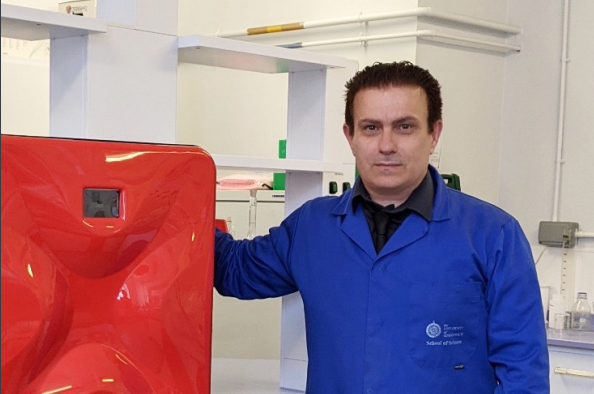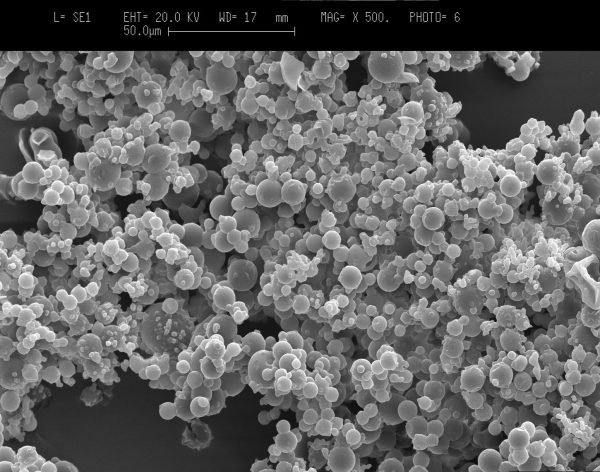The Centre for Innovation and Process Engineering Research (CIPER) at the University of Greenwich in the UK specializes in bioprinting, designing novel manufacturing processes, and engineering drug delivery systems. This research group, in particular, uses advanced 3D printing to develop medical devices like transdermal microneedles and bioabsorbable drug eluting stents, and pharmaceutical dosage forms. Recently, CIPER was in need of an AM method that, without requiring newly developed filaments, could fabricate extruded or granulated powders loaded with drugs, and turned to Poland-based SLS 3D printer manufacturer Sinterit.
I have seen the company’s benchtop LISA 3D printer used for many different applications, like an exoskeleton arm for children with Spinal Muscular Atrophy (SMA), opera costumes, a floating water pump for firefighters, molds for ice pops, and even a protective face mask for children, but pharmaceutical tablets is a new one. The company posted about the process in a recent case study, noting that the university purchased the Sinterit Solution—consisting of the LISA 3D printer and Powder Sieve—last year and reported that the CIPER team was able to 3D print the designed structures within just one month.
The researchers at CIPER have received a lot of funding from EU Research Programs (INTERREG 2 Seas, for example) and industry over the years, and were looking specifically for AM technology that would allow for the printing of drug-loaded powders; Sinterit’s SLS technology, paired with Hot Melt Extrusion to engineer 3D printable powders, obviously fit the bill. A range of polymer materials was used to 3D print personalized tablets with controlled, immediate, and sustained drug product release.
The whole purpose was to research drug/polymer powders with open parameters, such as PVA, and find a technology with an “unlimited capacity” to print any thermally stable drug substance. With Sinterit’s SLS technology, the researchers were able to design and print pharmaceutical tablets featuring complex geometries, as well as fabricate tablets containing several different grades of pharmaceutical polymers; spray drying was used to process the powder.
Sinterit’s software is said to be easy to use, and another benefit of its SLS printing is that the CIPER researchers were able to control the powder amounts in order to accurately print dosages with different drug strengths in the same batch; in addition, they could control the processing parameters of the printer, including the temperature of the bed and printing environment, and Sinterit’s post-processing equipment made it simpler to print tablets without any unbound powder.
(Source/Images: Sinterit)
Subscribe to Our Email Newsletter
Stay up-to-date on all the latest news from the 3D printing industry and receive information and offers from third party vendors.
You May Also Like
Precision at the Microscale: UK Researchers Advance Medical Devices with BMF’s 3D Printing Tech
University of Nottingham researchers are using Boston Micro Fabrication‘s (BMF) 3D printing technology to develop medical devices that improve compatibility with human tissue. Funded by a UK grant, this project...
3D Printing Webinar and Event Roundup: April 21, 2024
It’s another busy week of webinars and events, starting with Hannover Messe in Germany and continuing with Metalcasting Congress, Chinaplas, TechBlick’s Innovation Festival, and more. Stratasys continues its advanced training...
3D Printing Webinar and Event Roundup: March 17, 2024
It’s another busy week of webinars and events, including SALMED 2024 and AM Forum in Berlin. Stratasys continues its in-person training and is offering two webinars, ASTM is holding a...
3D Printed Micro Antenna is 15% Smaller and 6X Lighter
Horizon Microtechnologies has achieved success in creating a high-frequency D-Band horn antenna through micro 3D printing. However, this achievement did not rely solely on 3D printing; it involved a combination...
































